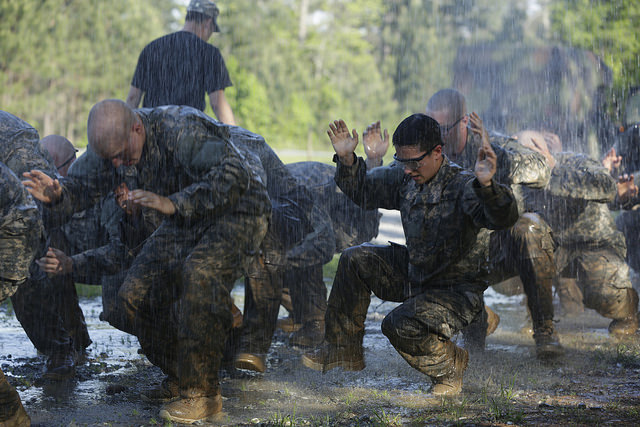Is sequestration hindering the United States military’s “combat readiness”?
Some say it is. Like oh, just the Secretary of Defense Ashton Carter, for example.
According to him, about 60 percent of the Army will receive training no higher than squad level this year. He also said that it won’t be for another five years — 2020 — that the Army, Navy and Marines all reach an acceptable level of readiness, which involves the consideration of both personnel and equipment.
By the same measure, the Air Force won’t be ready until 2023.
Of course this is all an effect of the Budget Control Act of 2011, which “forced” sequester cuts on the Pentagon and — according to some — resulted in the dramatic slide in readiness as well as preparedness.
These proponents of staunch and thorough levels of training say that historically its proven to be essential in making sure the newest members are able to form core intangibles that can be identified in overall proficiency, unit cohesion as well as trust confidence.
Lindsey Ness, a former Army officer and contributor the Washington Post as well as Stars and Stripes, cites this example from the last century in a robust commentary on the issue (that can be found here):
The best example of the importance of such training is the experience of the 1st Battalion, 21st Infantry Regiment, in July 1950. Most of the 400 soldiers in the group, known as Task Force Smith, hadn’t fired a shot since basic training. The task force had been deployed to Korea within days of the North Korean invasion, and its mission was to delay the enemy advance. Under relentless pressure from North Korea’s infantry and armor, the poorly trained and equipped battalion suffered 40 percent casualties while delaying enemy forces for seven hours. Modern Army training is based on this bitter lesson.
Modernization is also mentioned as a “hot button issue” in ensuring that the U.S. military’s superiority remains what it is and always has been: a cut above the rest of the world. Ness brings up the fact that combat vehicle and aviation upgrade are crucial in maintaining an elite force, but are significantly hindered by the aforementioned budget trimming.
It’s also personnel that’s seeing a reduction. According to Stars and Stripes, active-duty soldiers in the Army will drop from 570,000 to 420,000 by 2019.
Are these drastic budgetary decisions inline with the seismic shifts in world diplomacy as it pertains to safety and wellbeing of the United States?
Or are they a huge mistake?
What do you think?
[yop_poll id=”7″]




































